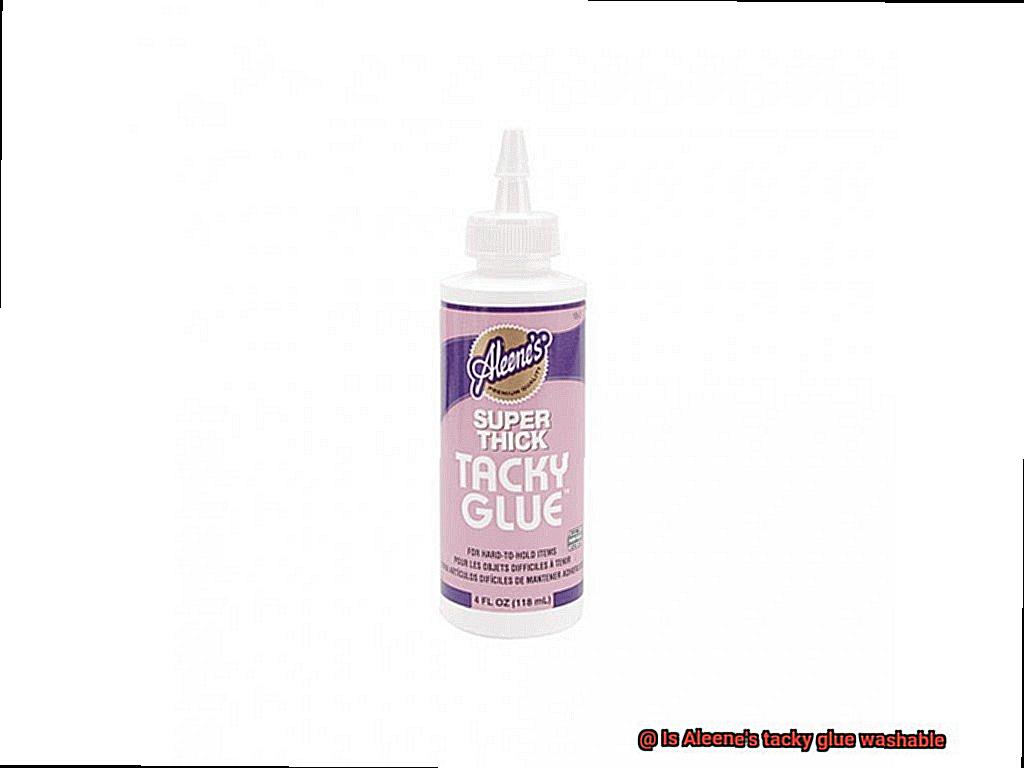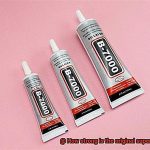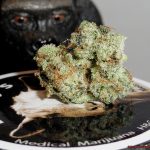If you’re a fan of E6000 glue, then you know it’s like the superhero of adhesives – strong, versatile, and ready to tackle any project. But here’s the burning question: is all E6000 glue created equal?
Well, hold on tight because we’re about to take a deep dive into the captivating world of E6000 glue variations. From the OG formula to specialized versions like E6000 Craft and E6000 Jewelry, there are subtle differences that can make a world of difference in your creative endeavors.
Today, we’re going to unravel the mysteries and uncover the secrets behind different types of E6000 glue. So next time you find yourself wandering through the aisles of your favorite craft store, you’ll be armed with knowledge and ready to choose wisely.
Let’s embark on this epic journey together, shall we?
What is E6000 Glue?
Contents
In this comprehensive guide, we delve into the world of E6000 glue, exploring its unique features, applications, and variations. Whether you’re a seasoned crafter or just starting out, understanding the power of this adhesive will elevate your projects to new heights.
Unleashing the Bonding Power:
E6000 glue is renowned for its exceptional bonding power. Its industrial-strength formula ensures a reliable bond on a wide range of materials, including metal, wood, glass, fabric, and plastic. Say goodbye to failed repairs and flimsy crafts. With E6000 glue, you can confidently tackle any project knowing that your creations will withstand the test of time.
Flexibility That Defies All Odds:
Unlike other adhesives that become rigid and brittle after drying, E6000 glue remains flexible. This remarkable feature allows it to move and expand with the materials it adheres to, preventing cracks and splits. So whether you’re working on jewelry, shoes, or even outdoor decorations exposed to varying temperatures and weather conditions, E6000 glue has got you covered.
Durable Against the Elements:
E6000 glue is not afraid of a challenge. It can withstand heat, cold, moisture, and even UV rays without losing its adhesive properties. This makes it suitable for both indoor and outdoor applications. Now you can confidently create weatherproof signs, garden ornaments, or repair outdoor furniture without worrying about the elements.
Chemical Resistance for Versatility:
One standout feature of E6000 glue is its resistance to chemicals and solvents. You can use it in environments exposed to various substances without compromising its adhesive strength. Crafters and DIY enthusiasts alike can rejoice in the versatility of this adhesive, knowing that it can handle any project, from jewelry-making to industrial repairs.
Variations and Considerations:
While E6000 glue excels in its performance, it’s important to note that there are different variations available. Some boast enhanced bonding power, faster drying times, or specific formulations for certain materials or applications. Always read product labels and descriptions carefully to ensure you choose the right variation for your needs.
Variations in Quality and Performance
Not all E6000 glues are equal in terms of quality and performance. In this enlightening exploration, we unravel the secrets behind the variations you may encounter. So, prepare to embark on a journey that will revolutionize your crafting experience.
The Manufacturing Process:
The enchanting journey of E6000 glue commences with its unique manufacturing process. Different manufacturers employ distinct formulations and production methods, resulting in subtle differences in the final product. These nuances significantly influence adhesive strength, drying time, and overall performance. Remember, for consistent results, always opt for genuine E6000 glue amidst a sea of imitations.
Shelf Life Matters:
Just like a gourmet delicacy, E6000 glue has a shelf life. Over time, this adhesive gem can lose its effectiveness, becoming less sticky and reliable. Before delving into your creative endeavors, take a moment to check the expiration date on the packaging. Using expired glue might deliver lackluster results that fail to meet your artistic aspirations. So, keep a watchful eye on those dates.
Storage Conditions:
Imagine the nightmares that extreme temperatures, prolonged exposure to sunlight, or improper storage can evoke in a humble tube of glue. These factors wreak havoc on your precious E6000 glue and negatively impact its adhesive properties. To ensure optimal longevity and effectiveness, treasure your glue like a priceless artifact by storing it in a cool, dry place away from direct sunlight.
User Error – The Silent Saboteur:
Ah, the elusive specter known as user error – a lurking menace for every DIY enthusiast. Improper application techniques or failure to follow instructions can sabotage your bonding efforts with E6000 glue, leading to subpar results. To evade the clutches of this silent saboteur, diligently read and adhere to the manufacturer’s instructions. Your artistic projects will thank you for this unwavering fidelity.
Specialized Formulations:
Prepare to be dazzled by a revelation: E6000 glue is not a one-size-fits-all adhesive. Delve deeper into its magnificent world, and you’ll discover an array of specialized formulations tailored to specific purposes like fabric bonding or jewelry making. These formulations may possess slight variations in composition or properties compared to the general-purpose variant.
Choose wisely, dear crafter. Selecting the appropriate formulation ensures the pinnacle of artistic achievement in your projects.
Manufacturing Processes and Composition
Manufacturing processes and composition play a crucial role in creating products like E6000 glue. Let’s delve into the intricate details of how this versatile adhesive is made.
To start, E6000 glue is formulated using specific raw materials. The base polymer, such as ethylene-vinyl acetate (EVA) or synthetic rubber, forms the foundation of the adhesive properties. Resins, solvents, and plasticizers are then added to the mix to enhance performance.
Once these ingredients are gathered, they undergo a meticulous blending process. Precise proportions are crucial to achieve the desired consistency and adhesive strength. The mixture is then subjected to heat, which triggers a chemical reaction called polymerization. This reaction causes the individual molecules to link together, resulting in a thick and viscous liquid.
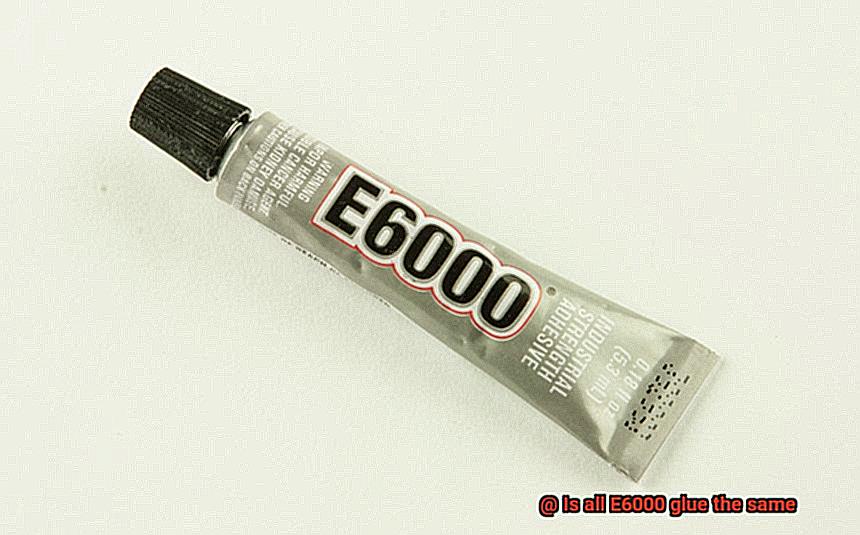
After polymerization, the glue goes through a cooling process, solidifying it for packaging. It is then carefully packaged in tubes or bottles of various sizes, catering to different project needs.
Now let’s talk about the composition of E6000 glue. Although there may be slight variations among different manufacturers, all E6000 glues share similar characteristics and adhesive properties. However, the specific blend of raw materials can differ slightly, leading to subtle differences in performance or application methods. It’s important to follow the instructions provided by the brand of E6000 glue you’re using for optimal results.
Regardless of these slight variations, all E6000 glues excel at providing durable adhesion on a wide range of surfaces like metal, wood, fabric, glass, and plastic. They boast flexibility and resistance to heat, cold, moisture, and chemicals.
Packaging and Labeling Considerations
Embark on a journey into the enchanting realm of adhesive wonders, where a tiny tube of E6000 glue possesses the ability to transform surfaces with its magical bonding capabilities.
In this captivating blog post, we will delve deep into the profound significance of packaging and labeling considerations when discerning the unique qualities that set apart various E6000 glue products. So seize your cherished crafting project and prepare to immerse yourself in a world brimming with insights.
Packaging Variations:
The spellbinding allure of E6000 glue lies not only in its mystical adhesive properties but also in the captivating array of packaging options offered by different manufacturers and product types. Some elixirs are contained within exquisite miniature tubes, providing an ideal vessel for precise applications, while others are ensconced in larger containers, catering to grandiose endeavors. These meticulously designed packages ensure the safe storage and effortless dispensing of the magical glue whenever it is summoned.
Labeling Essentials:
Behold the enchanting scrolls that adorn E6000 glue products, for they hold the key to unraveling the secrets within. These ethereal labels impart vital knowledge about the product, bearing witness to its brand name, product identity, and any extraordinary variations or specialized formulations. Imbued within these sacred texts are explicit instructions for harnessing the glue’s power, along with crucial safety precautions and warnings, ensuring that all who wield its might do so with utmost care and protection.
Quality Indicators:
Within the realm of packaging and labeling lies a hidden realm of clues that unveil the true essence of E6000 glue products. The mastery exhibited in high-quality packaging, adorned with labels that gleam with clarity, serves as a testament to a revered manufacturer who weaves their pride into every drop of their enchanted concoction. Conversely, inferior packaging or labels shrouded in ambiguity may hint at a product of lesser standing, potentially lacking the extraordinary performance expected from this mystical adhesive.
Regulatory Compliance:
In this mystical realm, adherence to the laws and regulations governing E6000 glue products stands as an essential cornerstone. The sacred scriptures etched on labels may bear witness to the inclusion of specific details, such as the enchanted ingredients, warnings of potential perils, or insights into the magical influence on the environment. Ensuring compliance with these sacred decrees ensures that those who seek the power of E6000 glue are bestowed with the knowledge necessary to make informed choices.
User Experiences and Reviews
Step into the world of E6000 glue, the go-to adhesive for crafting and repair projects. In this article, we will take a deep dive into the user experiences and reviews of E6000 glue, arming you with the knowledge needed to make an informed purchasing decision. Let’s embark on this journey together.
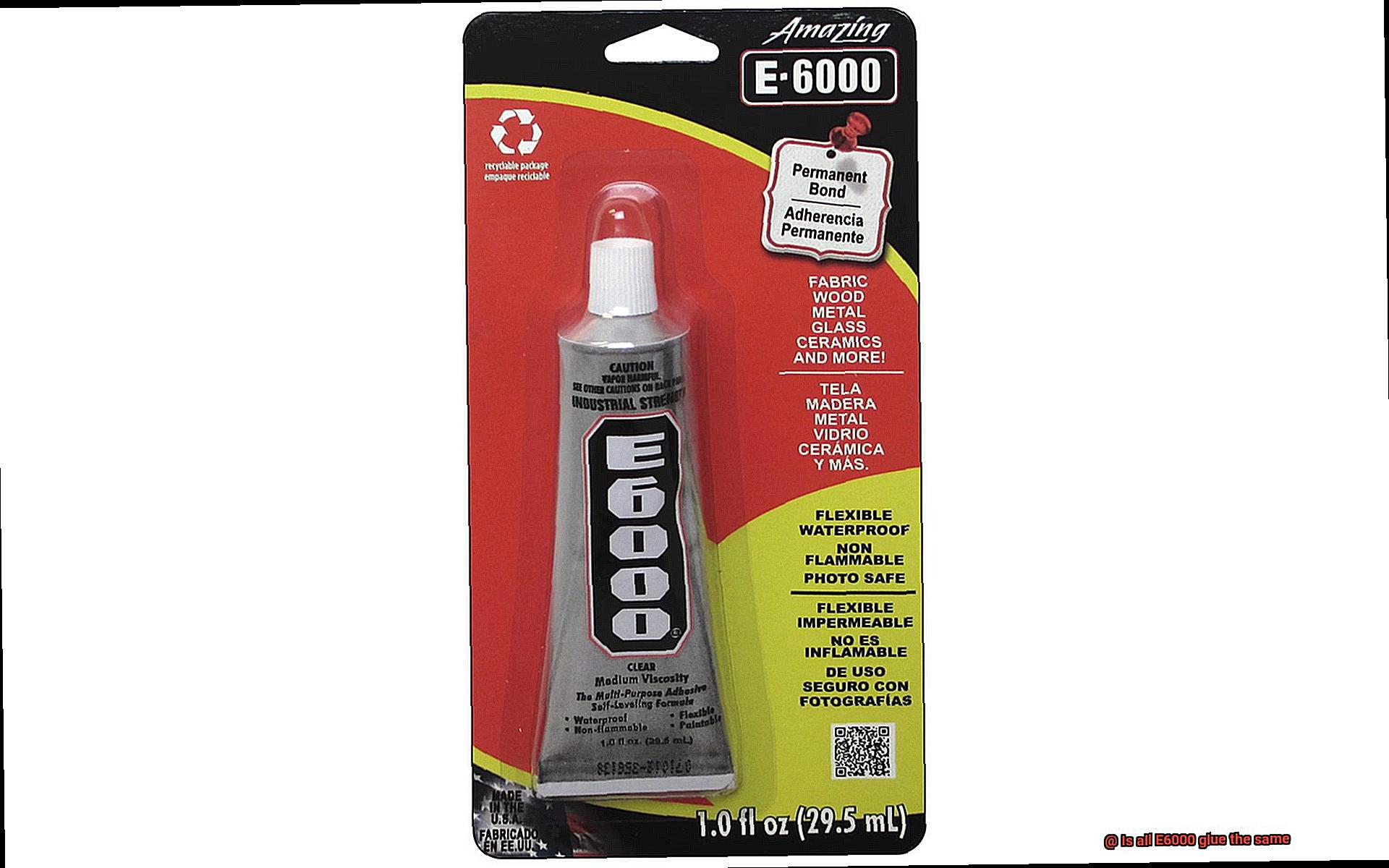
Consistency: The Sticky Situation
- Some versions boast a thicker consistency, making it a breeze to handle and apply.
- Others may be runnier, leading to messy application or difficulties in controlling the amount of glue dispensed.
Adhesion Strength: The Power to Bond
- E6000 glue is renowned for its exceptional bonding power, securing materials like metals, plastics, ceramics, and fabrics.
- However, user experiences have uncovered instances where certain versions did not deliver the expected strong bond or weakened over time.
Drying Time: Patience is a Virtue
- Compared to other glues, E6000 glue generally requires a longer drying time.
- But here’s the twist: some versions dry relatively faster than others, perfect for projects that demand a quicker turnaround.
Odor: A Whiff of Chemistry
- Brace yourself for the strong smell emitted by E6000 glue.
- User experiences reveal that some versions have a more noticeable odor than others, crucial information for those sensitive to strong smells or working in enclosed spaces.
User experiences and reviews are priceless resources when it comes to selecting the ideal version of E6000 glue. Differences in consistency, adhesion strength, drying time, and odor can significantly impact your project’s success. By delving into the insights shared by users, you’ll be equipped to make an informed decision that aligns with your specific needs and preferences.
Batch Variations and Production Methods
It’s important to understand that not all E6000 glues are created equal. In this article, we will dive deep into the captivating world of batch variations and production methods to unravel how they impact the quality and consistency of this adhesive powerhouse.
Batch Variations:
- Sourcing of Raw Materials: The quality of raw materials used in manufacturing can vary from batch to batch, resulting in slight variations in composition and performance. From the chemicals to the polymers, each ingredient plays a vital role in determining the glue’s effectiveness.
- Manufacturing Process: The glue’s properties are influenced by variables like temperature, mixing time, and curing conditions. The tiniest deviation in these factors can lead to differences in the final product, even within the same batch.
Production Methods:
- Manufacturer Techniques: Different manufacturers employ various techniques during production, resulting in unique characteristics for their E6000 glue. From innovative processes to secret formulas, each manufacturer adds their touch to the final product.
- Quality Control Measures: To minimize batch variations, reputable manufacturers implement strict quality control procedures. This includes regular testing of raw materials, close monitoring of production parameters, and comprehensive quality checks on finished products.
Consumer Considerations:
- Purchasing Consistency: When purchasing E6000 glue, awareness of batch variations is crucial. For projects where consistency is paramount, it’s advisable to buy a sufficient quantity from the same batch.
- Product Label Information: Keep an eye out for product labels that include essential information such as batch numbers or manufacturing dates. This data can help identify if a product comes from the same batch and provide peace of mind regarding its consistency.
Testing the Glue on a Sample
That’s why it’s crucial to put them to the test and determine their quality and consistency. So, let’s dive right in.
To begin, procure a small piece of the material you intend to use the glue on. Whether it’s fabric, plastic, or something else entirely, this will serve as our trusty test sample.
Now, take a small amount of E6000 glue and carefully apply it to the sample, following the manufacturer’s instructions to ensure accuracy. Ensure that you spread it evenly and allow it to dry completely. Remember, patience is key here.
Once the glue has dried, it’s time to subject it to some stressors and see how it performs. Give the material a gentle pull, twist it slightly, or expose it to reasonable extremes in temperature.
As you subject the sample to these stress tests, keep a keen eye out for any signs of weakness or failure. Does the glue hold up admirably or does it show signs of struggle? Make sure to note your observations.
To truly put different E6000 glues to the test, repeat this process using samples from various manufacturers. This will provide you with a side-by-side comparison of their performance.
However, bear in mind that even if all E6000 glues perform similarly on the sample, there may still be differences in their long-term durability. Factors such as storage conditions, application technique, and compatibility with specific materials can also impact their performance. So keep those factors in mind as well.
b2Dd2_BjEWY” >
Conclusion
In conclusion, not all E6000 glue is cut from the same cloth. They may seem similar at first glance, but when you delve deeper, you’ll discover a world of variations that can make all the difference.
Manufacturing processes and composition are key players in the creation of E6000 glue. Each manufacturer has their own secret formula and production methods that result in subtle distinctions. These nuances affect adhesive strength, drying time, and overall performance. So don’t be fooled by imitations – stick with genuine E6000 for consistent results.
Packaging and labeling also play a crucial role in distinguishing between different E6000 glue products. Manufacturers offer various packaging options to cater to different project needs. Labels provide vital information about brand identity, specialized formulations or variations, usage instructions, safety precautions, warnings, and regulatory compliance.
User experiences and reviews are a goldmine of information when it comes to understanding the consistency of E6000 glue. Differences in consistency, adhesion strength, drying time, and odor can make or break a project. So take heed of these factors when selecting your ideal version of E6000 glue.
Batch variations and production methods can also impact the quality and consistency of E6000 glue. Even within the same batch, slight differences in raw materials sourcing or manufacturing processes can occur. To ensure consistency is paramount for your project, it’s wise to purchase sufficient quantities from the same batch.
Lastly, putting different E6000 glues through rigorous testing on samples will give you insight into their quality and performance. Stress tests like pulling or twisting can reveal any signs of weakness or failure. However, keep in mind that long-term durability may still vary due to factors such as storage conditions or compatibility with specific materials.

